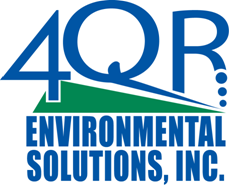It is coming. The Globally Harmonized Hazard Communication System (GHS) drafting and comment periods are complete. Now the wait for the final rule and implementation period. The GHS will replace the Hazard Communication Program (Hazcom) and will align the US requirements for classifying and labeling chemicals with the United Nations GHS, bringing us closer to worldwide uniformity on how we manage and relate chemical information. Many businesses have already implemented policies and procedures in preparation of the new standard. Once the rule is final, you may be looking at an estimated three to five year transition period for implementing the final rule. So where are you in your preparation?
A good start to getting ready is understanding the proposed rule, which is available for viewing in pdf format or download at www.osha.gov/dsg/hazcom/ghs.html. Then you will want to review the status of your current chemical inventory and how your current material safety data sheets (MSDS) are organized. And don't forget to start communicating to your management and workers that changes are on the way.
There will be globally acceptable terms and symbols. The proposed rule has a listing of all the terms. For example, MSDS will be simplified to safety data sheets, or SDS. And to increase consistency, the SDS will classify chemicals for health and physical standards based on GHS criteria that are formatted in a specific order on a 16 section document. Start weeding out your redundant and outdated documents while setting up a process for replacing new SDS when they are obtained. It is also a good time to dispose of any chemicals that are outdated and/or that you have no plans to use.
Many companies have considered shifting their MSDS organization and chemical inventory to online databases to help better manage them. You will want to determine what method for transitioning your MSDS is best for you. Maintaining a spreadsheet may be a suitable option in lieu of an online database. Most countries are shifting their practice requires to align with the United Nations GHS, but not all. And there still may be some variance. Will you be needing a multi-regional or country-specific SDS or the ability to get SDS in other languages?
Another thing you can expect and prepare for are pictograms on labels, which are already available. And don't forget - more training. Talk about it - communicate the new requirements for hazards and precautionary information using SDS and labels. Communicate the differences so your workplace will be better prepared when the final rule is issued.
